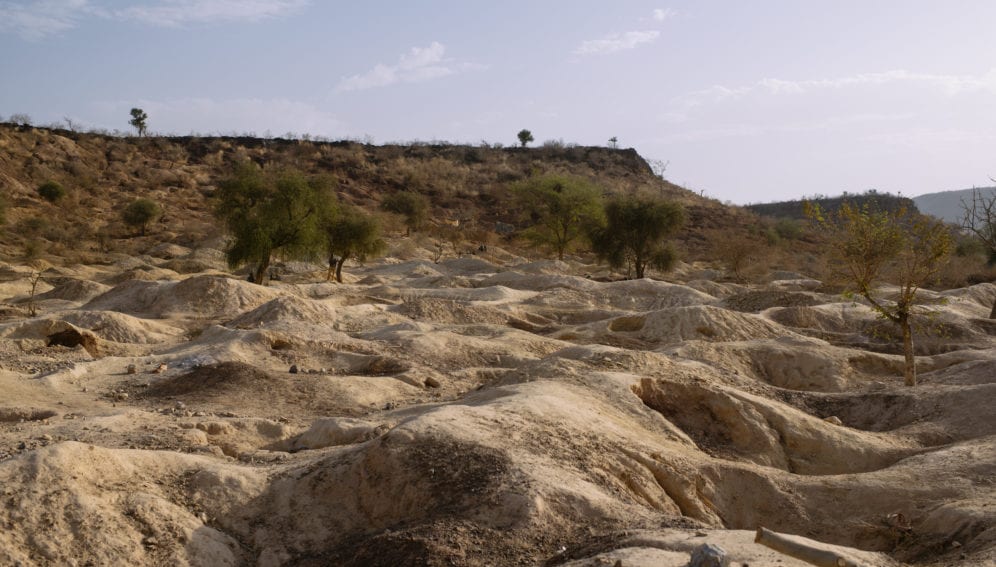28/06/19
Combine efforts to tackle land degradation

By: Ochieng’ Ogodo
Send to a friend
The details you provide on this page will not be used to send unsolicited email, and will not be sold to a 3rd party. See privacy policy.
[ANKARA, TURKEY] Land degradation and desertification are rampant in several countries, especially in the developing world but combating them can be achieved only through combined efforts that include governments, scientists, the private sector and the youth, experts told a meeting.
About two billion hectares of land need to be restored globally and governments should act fast in mobilising communities and resources to make this a reality, according to Ibrahim Thiaw, the executive secretary of the United Nations Convention to Combat Desertification (UNCCD) who was speaking at the World Day to Combat Desertification last week (17 June) in Turkey.
“Land restoration cannot be left in the hands of governments alone if success is hoped for in the near future,” Thiaw says.
“Restoration of land is about food security, and reducing clashes over resources such as water and pasture.”
Ibrahim Thiaw, United Nations Convention to Combat Desertification
The Food and Agriculture Organization says that African countries have lost a significant quantity of their soils to various forms of degradation. Serious erosion areas are found in countries such as Central African Republic, the Democratic Republic of Congo, Ethiopia, Ghana, Guinea, Liberia, Mauritania, Nigeria, Niger, Sierra Leone, Senegal, Sudan and Somalia.
Combating desertification, restoration of degraded land and soil, and striving to achieve a land degradation-neutral world by 2030 is a key target of the Sustainable Development Goal 15.
Mariam Akhtar-Schuster, the co-chair of the policy-science interface of the UNCCD, says desertification is already a major crisis in Africa that needs to be tackled in order to move towards sustainable development.
Policymakers need science-based evidence to take the right decision in moving or transforming the use of land in their countries towards sustainable land management, she tells SciDev.Net.
“Currently, there is a huge migration of rural people to cities in Africa due to desertification, scarcity of natural resources such as grazing land, productive soils and water lost due to overuse by communities,” she says.
There is a need for science and research for sustainable land management to give farmers incentives to invest in sustainable management practices and the right tools that enable them restore degraded lands, explains Akhtar-Schuster, adding that restoration of degraded lands is not only about planting trees.
“In some cases it is about the habits and attitudes of the local people. You can plant a billion trees but if you do not have good sensitisation system, those trees will not grow or they will be cleared again,” says Thiaw. “Restoration of land is about food security, and reducing clashes over resources such as water and pasture.”
In some parts of Africa such as the Sahel region and Nigeria where more people have been claimed by conflicts over access to land and water, land degradation is triggering conflicts, forced migration and suffering, according to Thiaw.
Thiaw explains that modern technologies for harnessing clean energy such as wind, solar and small hydro stations that can help people to safely keep their perishable products are some of the pathways to land restoration in Africa.
“Two-thirds of African population, about 700 million people, have no access to energy,” he adds.
Oliver Wasonga, a dryland ecology and pastoral livelihoods specialist at Kenya’s University of Nairobi, says many communities in rural Africa are increasingly losing their livelihoods because of land degradation that renders their farmlands unproductive.“Today, there is very little investment in sustainable land management, especially in the drylands and yet land degradation and desertification are among the world’s greatest environmental challenges,” Wasonga tells SciDev.Net.
“With over 50 per cent of Sub-Saharan Africa being arid and semi-arid lands, the livelihoods of over 400 million who inhabit these areas are at risk.”
This piece was produced by SciDev.Net’s Sub-Saharan Africa English desk.

